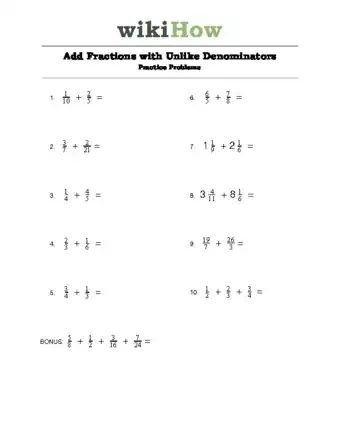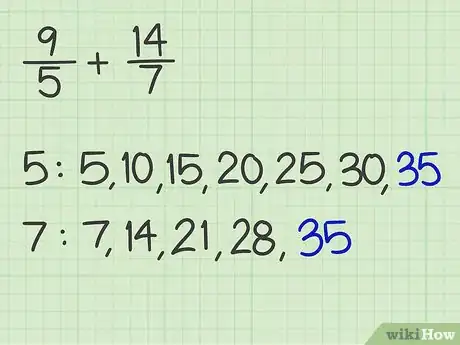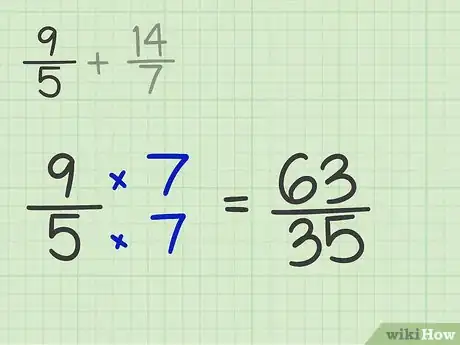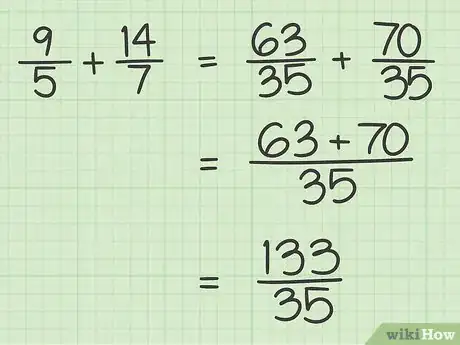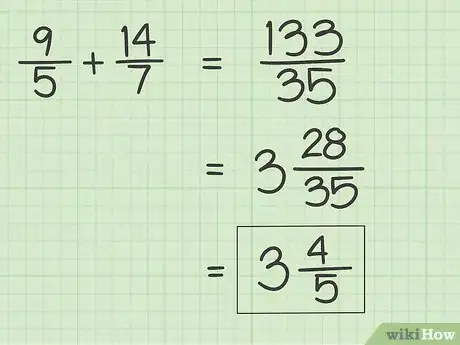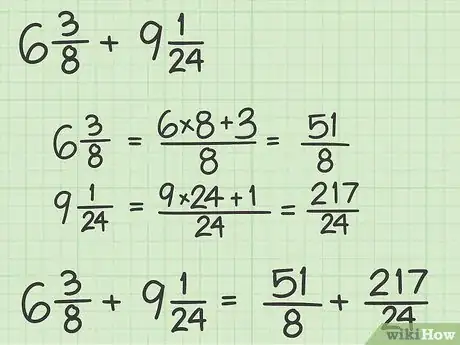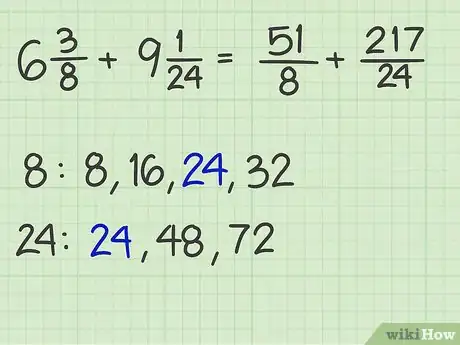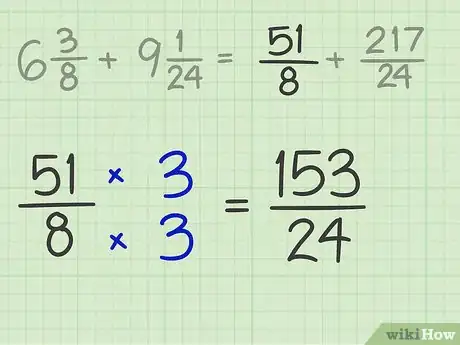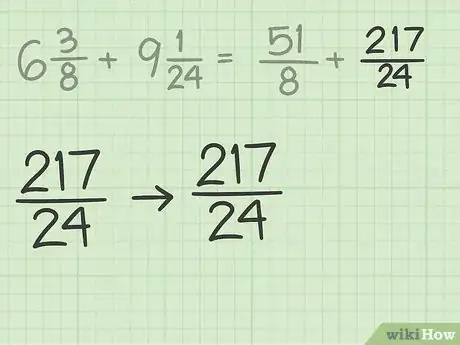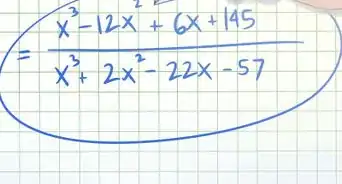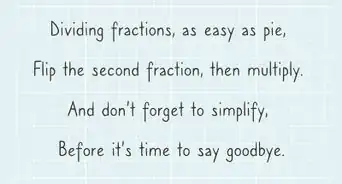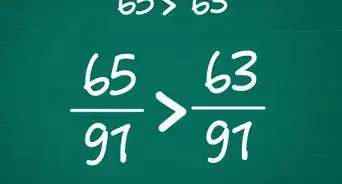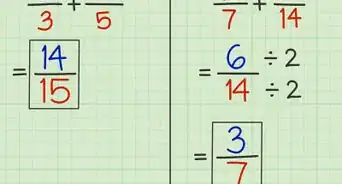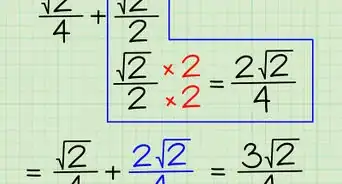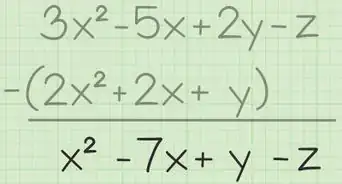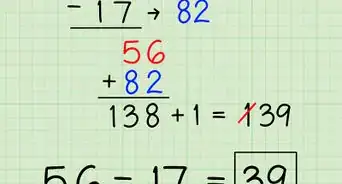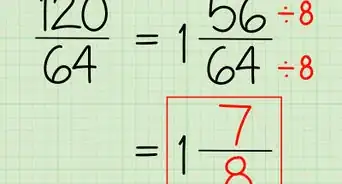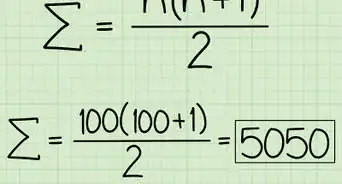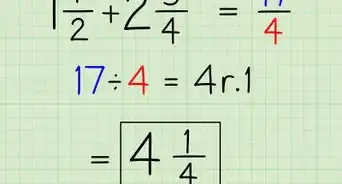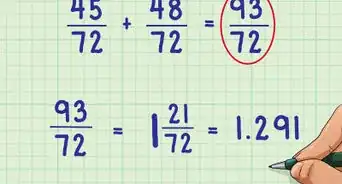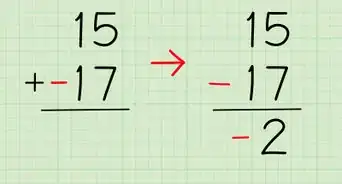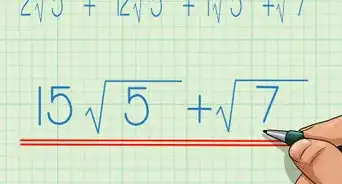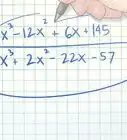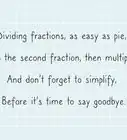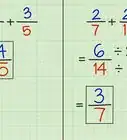This article was co-authored by David Jia and by wikiHow staff writer, Jessica Gibson. David Jia is an Academic Tutor and the Founder of LA Math Tutoring, a private tutoring company based in Los Angeles, California. With over 10 years of teaching experience, David works with students of all ages and grades in various subjects, as well as college admissions counseling and test preparation for the SAT, ACT, ISEE, and more. After attaining a perfect 800 math score and a 690 English score on the SAT, David was awarded the Dickinson Scholarship from the University of Miami, where he graduated with a Bachelor’s degree in Business Administration. Additionally, David has worked as an instructor for online videos for textbook companies such as Larson Texts, Big Ideas Learning, and Big Ideas Math.
This article has been viewed 915,920 times.
Adding fractions with unlike denominators may look tricky, but once you make the denominators the same, addition is a snap. If you're working with improper fractions where the numerators are larger than the denominators, make the denominators the same. Then add the numerators. If you're adding mixed numbers, turn them into improper fractions and make each fraction equivalent. This will make it easy to add the fractions together.
Steps
Practice Problems
Working with Improper Fractions
-
1Find the least common multiple (LCM) for the denominators.[1] Because you have to make the denominators the same before you add the fractions, find a common multiple that they share. Then choose the lowest one.[2]
- For example, for 9/5 + 14/7, the multiples of 5 are 5, 10, 15, 20, 25, 30, and 35 while the multiples of 7 are 7, 14, 21, 28, and 35. 35 is the least common multiple.
-
2Multiply the numerator and denominator to get like denominators. You'll need to multiply the entire fraction to make the denominator become the least common multiple.[3]
- For example, multiply 9/5 by 7 to get a denominator of 35. You should also multiply the numerator by 7, so the fraction becomes 63/35.
Advertisement -
3Turn the other fractions into equivalent fractions. Remember that when you adjust 1 fraction in your problem, you also have to adjust the other fractions so they're equivalent.[4]
- For example, if you've adjusted 9/5 to 63/35, multiply 14/7 by 5 to get 70/35. Your original problem 9/5 + 14/7 will turn into 63/35 + 70/35.
-
4
-
5Simplify or reduce the answer if necessary. If your answer is improper, turn the fraction into a mixed number. To do this, divide the numerator by the denominator so you get a whole number. Then see how many parts are left and place this number over the denominator.[7] Reduce the fraction if it can be simplified further.[8]
- For example, 133/35 can be simplified to 3 28/35. The fraction can be reduced to 4/5 so the finished answer is 3 4/5.
Adding Mixed Numbers
-
1Turn the mixed numbers into improper fractions. If you have fractions with whole numbers, changing them into improper fractions will make it easier to add. The numerators of your improper fractions will be larger than their denominators.[9]
- For example, 6 3/8 + 9 1/24 will turn into 51/8 + 217/24.
-
2Look for the lowest common denominator if necessary. If the denominators are different, you'll need to write down the multiples of each denominator so you can find 1 that they have in common. For example, for the problem 51/8 + 217/24, list the multiples of 8 and 24 to find 24.[10]
- Because the multiples of 8 include 8, 16, 24, 32, and 48 and the multiples of 24 include 24, 48, and 72, 24 is the lowest common multiple.
-
3Make the fraction equivalent if you need to change the denominators. The denominators should all become the lowest common multiple that you found. Multiply the whole fraction by a number to make the denominator the lowest common multiple.[11]
- For example, to make the denominator for 51/8 become 24, multiply the whole fraction by 3. You should get 153/24.
-
4Change all of the fractions in the problem to make them equivalent. If the other fractions in your equation have different denominators, you'll also have to multiply them so they have the same denominator. If the fraction already has that as the denominator, you don't need to adjust the fraction.[12]
- For example, if you're working with 217/24, you won't need to adjust the fraction since it already has the same denominator.
-
5Add the numerators but leave the denominator the same, these don't change. You can add the numerators once the denominators are the same or if there were the same from the start. Once you've added the numerators, put the answer over the denominator. Avoid adding the denominators.[13]
- For example, 153/24 +217/24 = 370/24.
-
6Simplify your answer. If your numerator of your answer is larger than the denominator, you'll have to divide it to get a whole number. To finish making a mixed number, write down how many parts you have leftover. This will make the numerator which you can put over the same denominator. Keep reducing the fraction down until it's in its simplest form.[14]
- For example, 370/24 will become 15 10/24 because 24 goes into 370 15 times and has 10 parts of 24 left over. 10/24 can be further reduced to 5/12 for a finished answer of 15 5/12.
Community Q&A
-
QuestionShould I simplify the answers to my math problems?
 Community AnswerYes, most teachers will want you to show the simplified answer.
Community AnswerYes, most teachers will want you to show the simplified answer. -
QuestionHow do I determine equivalent fractions that are not in simplest form?
 Community AnswerMultiply each fraction so that the denominators are the same. Then you can check the numerator to see if the fractions are equal.
Community AnswerMultiply each fraction so that the denominators are the same. Then you can check the numerator to see if the fractions are equal. -
QuestionI followed until #9, but I don't know what a common factor is, what is it?
 DonaganTop AnswererA common factor is any prime number that will divide evenly into each number being considered. The greatest common factor is the largest whole number that is a common factor. For example, in Step 9 above, 2 is the greatest common factor of 6 and 8, so they are both divided by 2 to arrive at 3 and 4. In another example, to find the greatest common factor of 42 and 315, first find all the factors of each number: 42 = 2 x 3 x 7, and 315 = 3 x 3 x 5 x 7. The common factors are 3 and 7, so the greatest common factor of 42 and 315 is 7.
DonaganTop AnswererA common factor is any prime number that will divide evenly into each number being considered. The greatest common factor is the largest whole number that is a common factor. For example, in Step 9 above, 2 is the greatest common factor of 6 and 8, so they are both divided by 2 to arrive at 3 and 4. In another example, to find the greatest common factor of 42 and 315, first find all the factors of each number: 42 = 2 x 3 x 7, and 315 = 3 x 3 x 5 x 7. The common factors are 3 and 7, so the greatest common factor of 42 and 315 is 7.
References
- ↑ https://www.varsitytutors.com/hotmath/hotmath_help/topics/adding-fractions-unlike-denominators
- ↑ https://www.georgebrown.ca/uploadedFiles/TLC/_documents/Adding%20and%20Subtracting%20Mixed%20Numbers%20and%20Improper%20Fractions.pdf
- ↑ https://www.georgebrown.ca/uploadedFiles/TLC/_documents/Adding%20and%20Subtracting%20Mixed%20Numbers%20and%20Improper%20Fractions.pdf
- ↑ https://www.georgebrown.ca/uploadedFiles/TLC/_documents/Adding%20and%20Subtracting%20Mixed%20Numbers%20and%20Improper%20Fractions.pdf
- ↑ https://www.calculatorsoup.com/calculators/math/adding-fractions-calculator.php
- ↑ https://www.georgebrown.ca/uploadedFiles/TLC/_documents/Adding%20and%20Subtracting%20Mixed%20Numbers%20and%20Improper%20Fractions.pdf
- ↑ https://www.calculatorsoup.com/calculators/math/adding-fractions-calculator.php
- ↑ https://www.georgebrown.ca/uploadedFiles/TLC/_documents/Adding%20and%20Subtracting%20Mixed%20Numbers%20and%20Improper%20Fractions.pdf
- ↑ https://www.georgebrown.ca/uploadedFiles/TLC/_documents/Adding%20and%20Subtracting%20Mixed%20Numbers%20and%20Improper%20Fractions.pdf
- ↑ https://www.georgebrown.ca/uploadedFiles/TLC/_documents/Adding%20and%20Subtracting%20Mixed%20Numbers%20and%20Improper%20Fractions.pdf
- ↑ https://www.georgebrown.ca/uploadedFiles/TLC/_documents/Adding%20and%20Subtracting%20Mixed%20Numbers%20and%20Improper%20Fractions.pdf
- ↑ https://www.georgebrown.ca/uploadedFiles/TLC/_documents/Adding%20and%20Subtracting%20Mixed%20Numbers%20and%20Improper%20Fractions.pdf
- ↑ https://www.georgebrown.ca/uploadedFiles/TLC/_documents/Adding%20and%20Subtracting%20Mixed%20Numbers%20and%20Improper%20Fractions.pdf
- ↑ https://www.georgebrown.ca/uploadedFiles/TLC/_documents/Adding%20and%20Subtracting%20Mixed%20Numbers%20and%20Improper%20Fractions.pdf
About This Article
To add fractions with unlike denominators, start by finding the least common multiple for the denominators. Then, divide the least common multiple by the denominator in each fraction. Take the number you get for each fraction and multiply it by the numerator and denominator of that fraction, which will make both denominators equal to the least common multiple. Finally, add the numerators together and leave the denominator as is to get your answer. To learn how to simplify your answer, keep reading!
